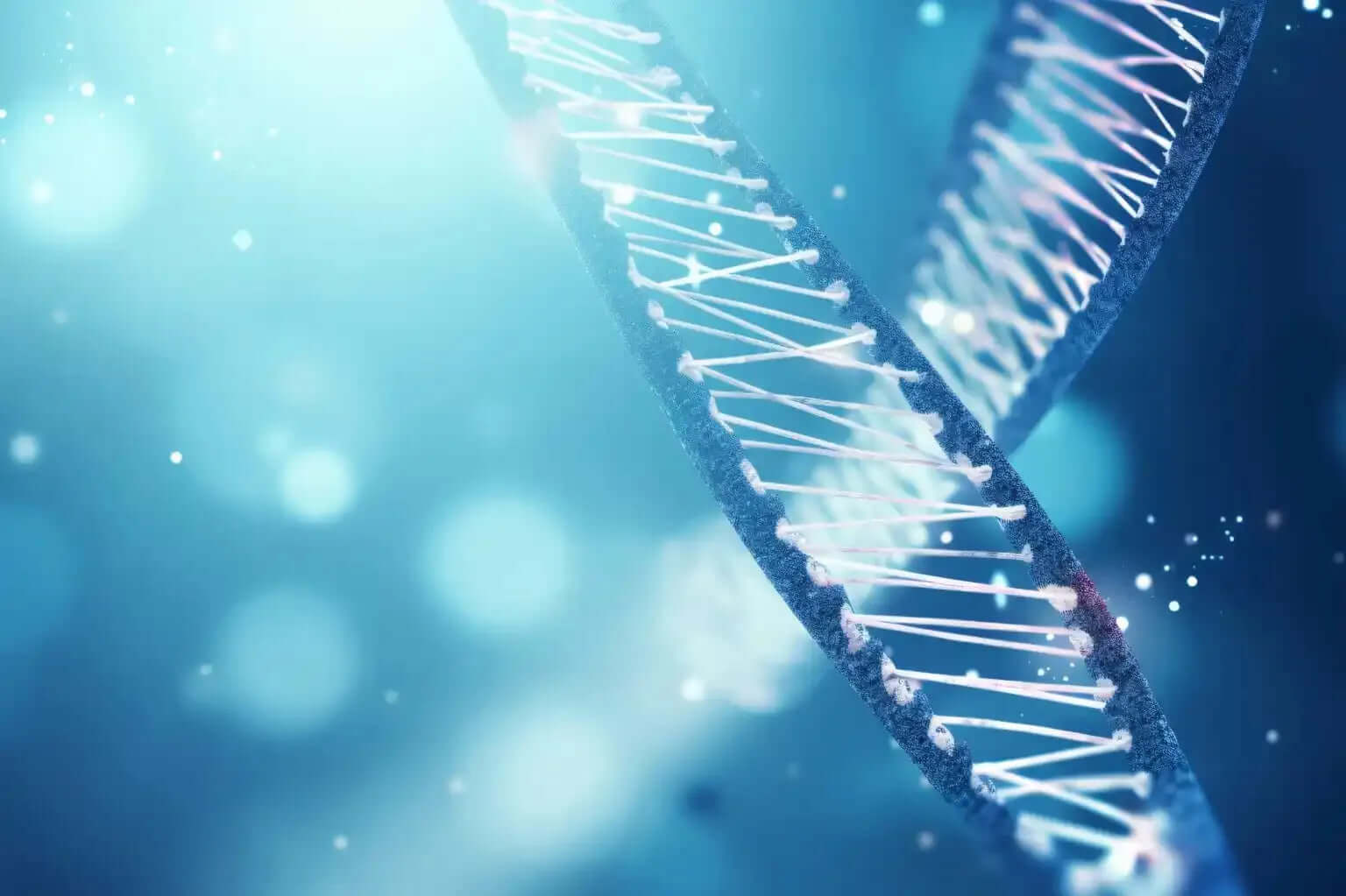Sometimes, when a newborn or child is hospitalized with a severe, unexplained illness, the cause of their symptoms may be hidden within their genetic code.
Our genes are like sentences in a manual that instruct our bodies on how to function properly. They guide the production of proteins, which are essential for building and maintaining our body's cells, tissues, and organs.
These genes, though critical, only constitute about 1 to 2 percent of our entire genome, which includes all of our DNA. This crucial part of the genome that contains these instructional genes is known as the "exome."
In recent years, doctors and researchers often used whole exome sequencing (WES) to identify new genetic mutations linked to diseases, as it was cheaper and required less storage than sequencing the entire genome.
However, with the decreasing costs of sequencing and data storage, whole genome sequencing (WGS) has become more practical.
WGS examines all 3 billion DNA base pairs in a human genome, translating them into a readable file. This allows medical professionals to search for mutations, essentially looking for typos in the genetic code, to find potential causes of illnesses.
Sources: Yale Medicine
Understanding Genome Sequencing

So what exactly is a genome?
The term "genome" refers to all the genetic material in an organism. This includes DNA (or RNA in some viruses), both the parts that encode genes and those that do not, as well as mitochondrial DNA and chloroplast DNA in plants.
Essentially, a genome encompasses an organism's complete set of DNA, which contains all the information needed to build and maintain that organism.
DNA Sequencing

Sequencing DNA involves determining the order of the four chemical building blocks, known as "bases," that make up the DNA molecule.
These bases are adenine (A), thymine (T), cytosine (C), and guanine (G).
By understanding the sequence of these bases, scientists can identify which parts of the DNA carry genes and which parts regulate gene activity—either turning genes on or off.
Crucially, sequencing can also reveal changes in genes that may lead to diseases.
The structure of DNA is a double helix, where each base pairs with its specific partner: A with T, and C with G.
This precise pairing is crucial for the replication of DNA when cells divide and is fundamental to the techniques used in most DNA sequencing experiments.
The human genome, for instance, comprises about 3 billion base pairs that provide the instructions for creating and sustaining a human being.
The Importance of the Human Genome
Fully understanding the human genome is essential for scientific and medical advancements. It allows researchers to:
- Search for genes linked with different diseases.
- Understand inherited disorders and develop treatments.
- Trace human migration patterns from ancient times.
The Process of Whole Genome Sequencing

Let’s have a look at how whole genome sequencing works:
- DNA Extraction - Scientists start by taking bacterial cells from an agar plate, breaking them open with chemicals to release the DNA, which is then purified.
- DNA Shearing - The DNA is chopped into shorter pieces, either using enzymes known as "molecular scissors" or through mechanical means.
- DNA Library Preparation - Next, scientists make multiple copies of each DNA piece using a method called polymerase chain reaction (PCR). The resulting collection of DNA fragments, created in a PCR machine, is called a "DNA library."
- DNA Library Sequencing - This DNA library is then placed into a sequencer, which identifies the sequence of nucleotides (A, T, C, and G) in each DNA fragment. The sequences are recorded as "DNA reads."
- DNA Sequence Analysis - The sequencer outputs millions of DNA reads. Special computer programs align these reads and assemble them into the complete genome sequence, like solving a jigsaw puzzle. This complete sequence, comprising millions of nucleotides, is then ready for further study.
Source: CDC
Applications of Whole Genome Sequencing

Whole Genome Sequencing is revolutionizing medical research, especially in the study of genetic diseases.
By examining an individual's entire DNA sequence, WGS helps identify mutations that cause diseases, offering a complete picture of our genetic blueprint. This technology is like the North Star in the universe of medical innovation—it guides us toward understanding and treating diseases more effectively.
With advancements in computing power accelerating at a pace similar to software development, WGS is set to transform personalized medicine, making targeted treatments more accessible and improving health outcomes for everyone.
WGS is also instrumental in evolutionary biology, assisting in the study of evolutionary relationships and providing insights into genetic diversity and adaptation. Researchers get to explore the genetic basis of evolution and species differences.
Challenges and Limitations of Whole Genome Sequencing
1. Accuracy in Base-Calling
One of the initial challenges in sequencing a genome is accurately identifying bases. The high-intensity data generated by sequencing platforms need precise base-calling algorithms.
2. Read Lengths and Mapping
Current sequencing technology varies in read lengths, but most are relatively short, which can complicate mapping to the reference genome. Inconsistent mapping results can happen due to sequencing errors or algorithm limitations.
3. Variant Calling Sensitivity
Identifying genetic variants, such as SNPs and structural variations, is another challenge. A typical human genome may differ from the reference genome at millions of sites. Algorithms used for detecting these variations vary in effectiveness.
4. Error Rates and Implications
Even the best sequencing platforms have an error rate that can result in thousands of inaccuracies per genome. These errors lead to the misidentification of disease-causing variants, causing unnecessary concern or procedures for individuals.
5. Infrastructure and Data Management
The vast amount of data generated during sequencing requires a solid computing infrastructure for effective processing and analysis. This involves significant investment in IT resources to handle data transfer and storage needs.
Source: Oxford Academic
Are newer sequencing technologies under development?
Yes! One innovative method involves observing DNA polymerase—the enzyme that copies DNA in our cells—as it works.
Researchers use a high-speed camera and microscope along with brightly colored dyes that represent the DNA bases A, T, C, and G. This technique offers unique insights that differ from those provided by the more commonly used sequencing systems.
Another promising technology is based on nanopores. In this method, individual DNA strands are pulled through very small pores in a membrane. As each DNA base passes through the nanopore, it affects the flow of ions and electrical current in a unique way, allowing the base to be identified.
Nanopore sequencing could be cheaper and faster than existing methods and allows for repeated studies of the same DNA molecule.
Source: Genome
Whole Genome Sequencing Has Transformative Potential

Moreover, whole genome sequencing is a revolutionary technique that decodes an individual's complete DNA sequence, giving a wide view of genetic variations and mutations within coding and non-coding regions.
By examining the entire genome, WGS furthers our understanding of genetic disorders and their treatments, as well as opens the door to new discoveries in human health and history.
About Fore Genomics
Fore Genomics is designed as the most comprehensive genetic screen possible for newborns, infants, and children. We want every family to have access to the best technologies available for their child's health. Genetic screening can be used prior to the onset of symptoms to lead to proactive management of genetic diseases.
Our goal is simple: to give parents peace of mind and help children live healthier lives.
Learn more about the 500+ conditions and medication interactions we screen for.
FAQs
What is the difference between whole genome sequencing and other sequencing methods?
Whole genome sequencing reads an individual's entire DNA sequence, covering both the coding regions (exons) and non-coding regions, unlike other methods like Whole exome sequencing which only targets the exons that code for proteins.
How much does whole genome sequencing cost?
The cost of whole genome sequencing has dropped significantly but can still vary widely depending on the provider and the depth of analysis required.
How long does it take to sequence a genome?
The time required to sequence a genome varies based on the technology used and the sequencing depth.
Can whole genome sequencing predict future health risks?
Yes, whole genome sequencing can predict the risk of developing certain genetic diseases by identifying pathogenic variants in the DNA. However, its predictive power depends on the disease, as some conditions are influenced more by environmental factors or involve complex interactions of multiple genes.



